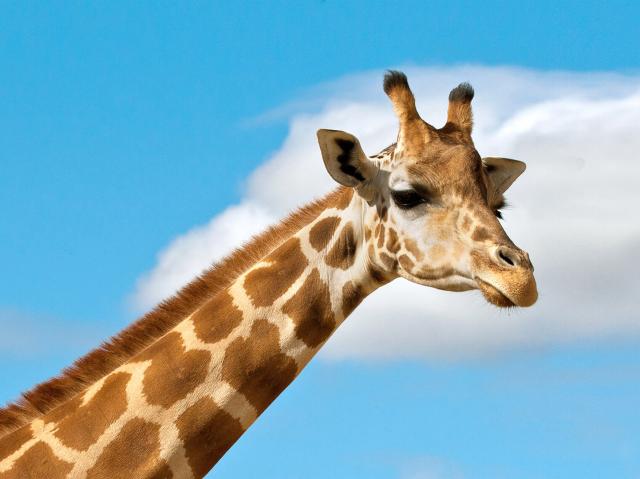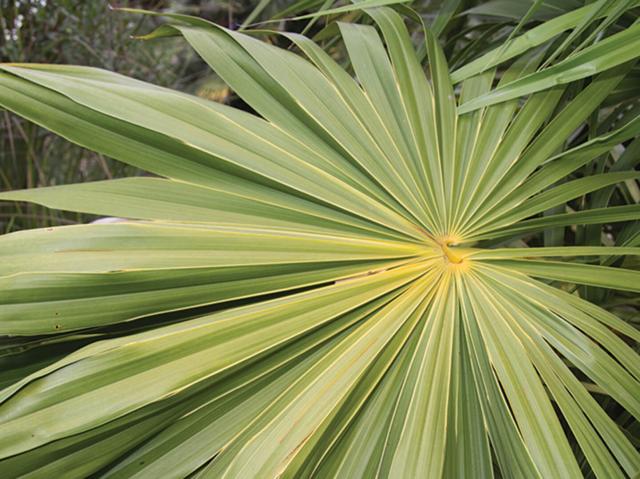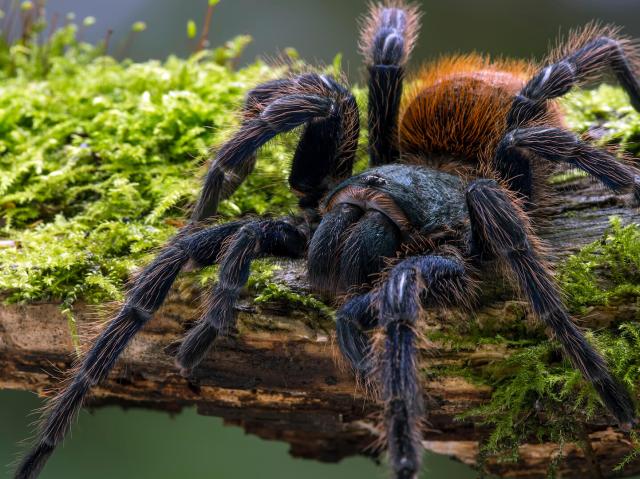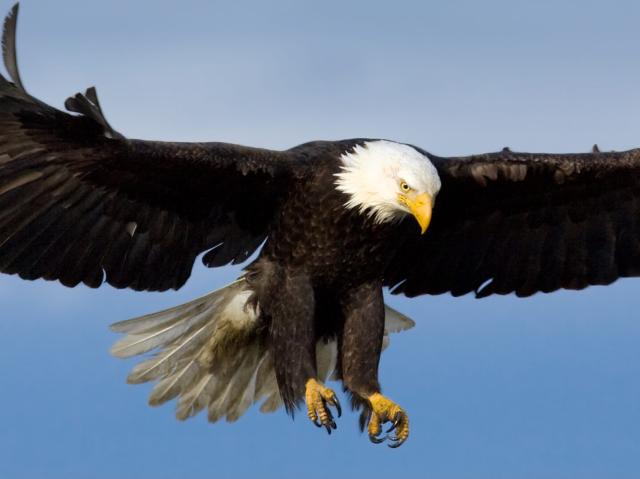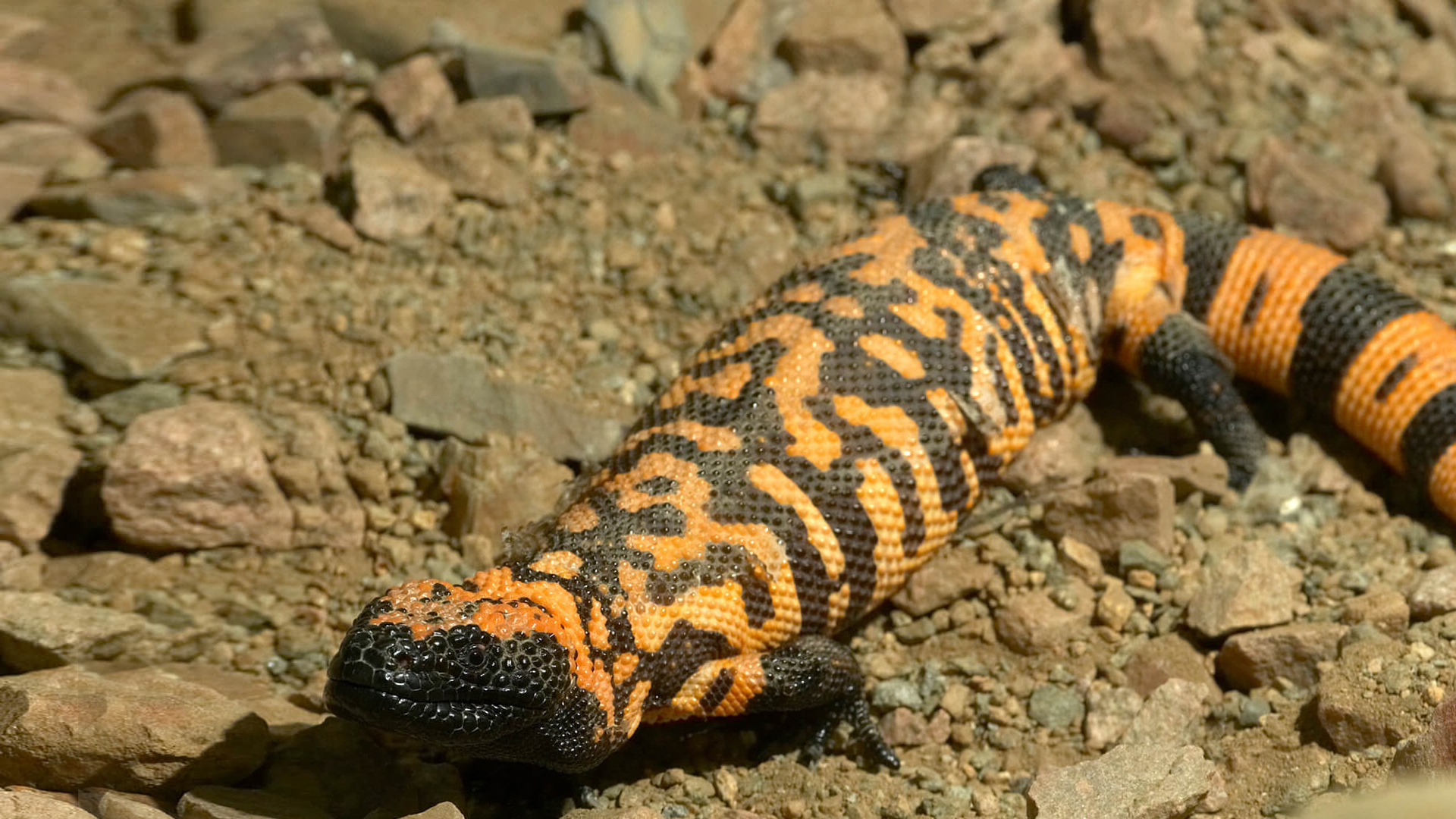
Gila Monster

- CLASS: Reptilia (Reptiles)
- ORDER: Squamata
- FAMILY: Helodermatidae
- GENUS: Heloderma
- SPECIES: suspectum

ABOUT
What's in a name? As the name might suggest, the Gila (pronounced HEE-la) monster has one of the worst reputations in the reptile world. This lizard is often feared and has been described as frightful and repulsive, especially in local folklore. It has been accused of many things, such as spitting venom, leaping several feet in the air to attack, stinging with its tongue, and killing people with gusts of poisonous breath. We’re glad you’re reading this, to learn the truth about these interesting lizards!
Gila monsters are heavy-bodied lizards covered with beadlike scales, called osteoderms, that are black and yellow or pink covering all but their belly. The Gila monster is venomous; its venom is made by a row of glands in the lizard’s lower jaw. When the lizard bites, small grooves in the teeth help the venom flow into its prey. The bite of a Gila monster is very strong, and the lizard may not loosen its grip for several seconds. It may even chew so that the venom goes deeper into the wound.
A Gila monster bite is painful to humans, but it rarely causes death. The biggest problem you might have if a Gila monster bit you is trying to get the lizard to release its grip! But you really shouldn't worry, as Gila monsters tend to avoid humans and other large wildlife. To warn off potential predators, they open their mouth very wide and hiss.
HABITAT AND DIET
Gila monsters are solitary and live in desert and semi-desert areas with just enough moisture to support a few shrubs. Gila monster burrows are commonly found in rocky foothills, as they avoid open areas. The lizards can adjust their behavior according to the temperature. Gila monsters may be active at night if temperatures are extremely hot during the day or be crepuscular or diurnal if the temperature is optimal for them.
Gila monsters walk high on their short legs, with the tail clear of the ground and swinging from side to side for balance, in what looks like an awkward gait. Their speed is not great, but the monsters keep at it. Good climbers, Gila monsters are often found fairly high up in cholla cactus foraging for bird eggs in nests.
During cold winter months, Gila monsters stay in burrows dug with their stout claws or even burrows of desert tortoises and have fat stores in their tail to keep them alive during this time. When springtime comes, they begin to hunt again.
As carnivores, Gila monsters do not have very good eyesight; when they hunt, they use their senses of taste and smell. To track prey, the Gila monster flicks its forked tongue out to pick up scent particles in the air. These lizards are not very fast, so they need to sneak up on prey and bite them before they get away. Their prey includes birds’ eggs and nestlings, rodents, frogs, lizards, insects, centipedes, and worms; they may also eat carrion.
Gila monsters don’t chew their food but instead just swallow it whole; however, they do break open eggs. The monster’s venomous saliva may be more useful as a defense against predators rather than for hunting, because most of the lizard’s prey is small enough to be subdued by the strength of the bite. There is no antivenom for Gila monster bites.
At the San Diego Zoo, the Gila monsters are fed mice and hard-boiled eggs.
FAMILY LIFE
Gila monsters seem to have a loose social structure and occasionally share shelters. Males compete for mates by engaging in carefully choreographed wrestling matches, in which the biggest and strongest wins.
Breeding season for Gila monsters is usually in early summer. The female digs a hole, lays a clutch of large, leathery, oval-shaped eggs in the hole, and covers them. The eggs are not buried very deep, so the heat of the sun incubates them. About four months later, the baby Gila monsters break out of their eggs and crawl to the surface. They are only a few inches long, but look like miniature adults with more vivid coloring. The hatchlings are ready to begin life on their own!
CONSERVATION
Much of the scrubland of the Gila monster's habitat has been cleared for agriculture, canals, roads and highways, and other human activities. Domestic cats and dogs often kill the lizards, and some Gila monsters are illegally collected for the pet trade. In 1952, Gila monsters became the first venomous wildlife in North America to be given legal protection.
LIFE SPAN
Up to 20 years in the wilderness; over 30 years in expert care
YOUNG
Number of eggs laid: 3 to 13
Size of egg: 2.5 x 1.24 inches (6.3 x 3.2 centimeters)
Weight of egg: 1.4 ounces (40 grams)
Incubation period: 4 months
Length at hatch: 6.3 inches (16 centimeters), average
Age of maturity: 3 to 5 years
SIZE
Length: Up to 21.5 inches (55 centimeters)
Weight: 1.5 to 3 pounds (.7 to 1.4 kilograms)
FUN FACTS
The Gila monster and its close cousin, the beaded lizard Heloderma horridum, are the only two venomous lizards in the world.
A drug for the management of Type 2 diabetes is based on a protein from the Gila monster’s saliva. The drug is sometimes referred to as lizard spit.
The Gila monster can eat a third of its body weight in one meal.
It has been reported that the Gila monster may flip over while its jaws are still clamped onto prey. This move may help its venom flow into the wound.
The Gila monster is named for the Gila River in Arizona.



